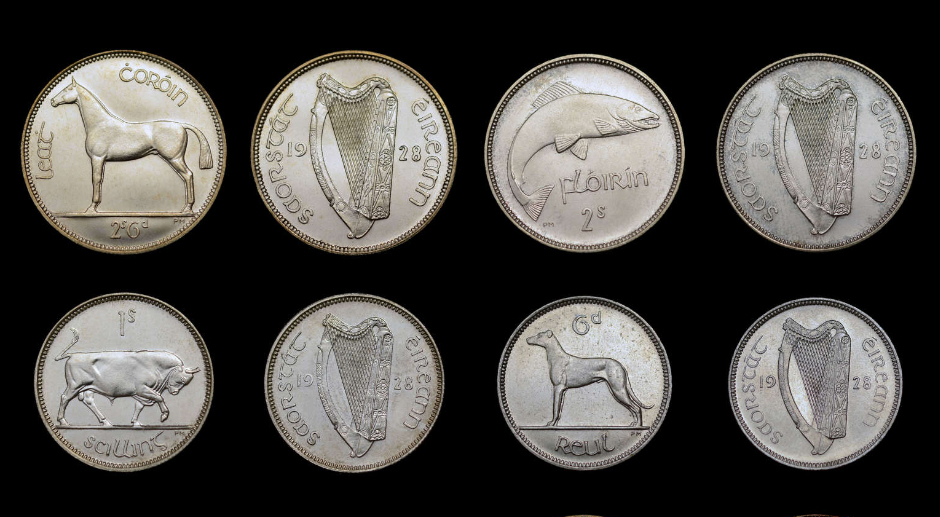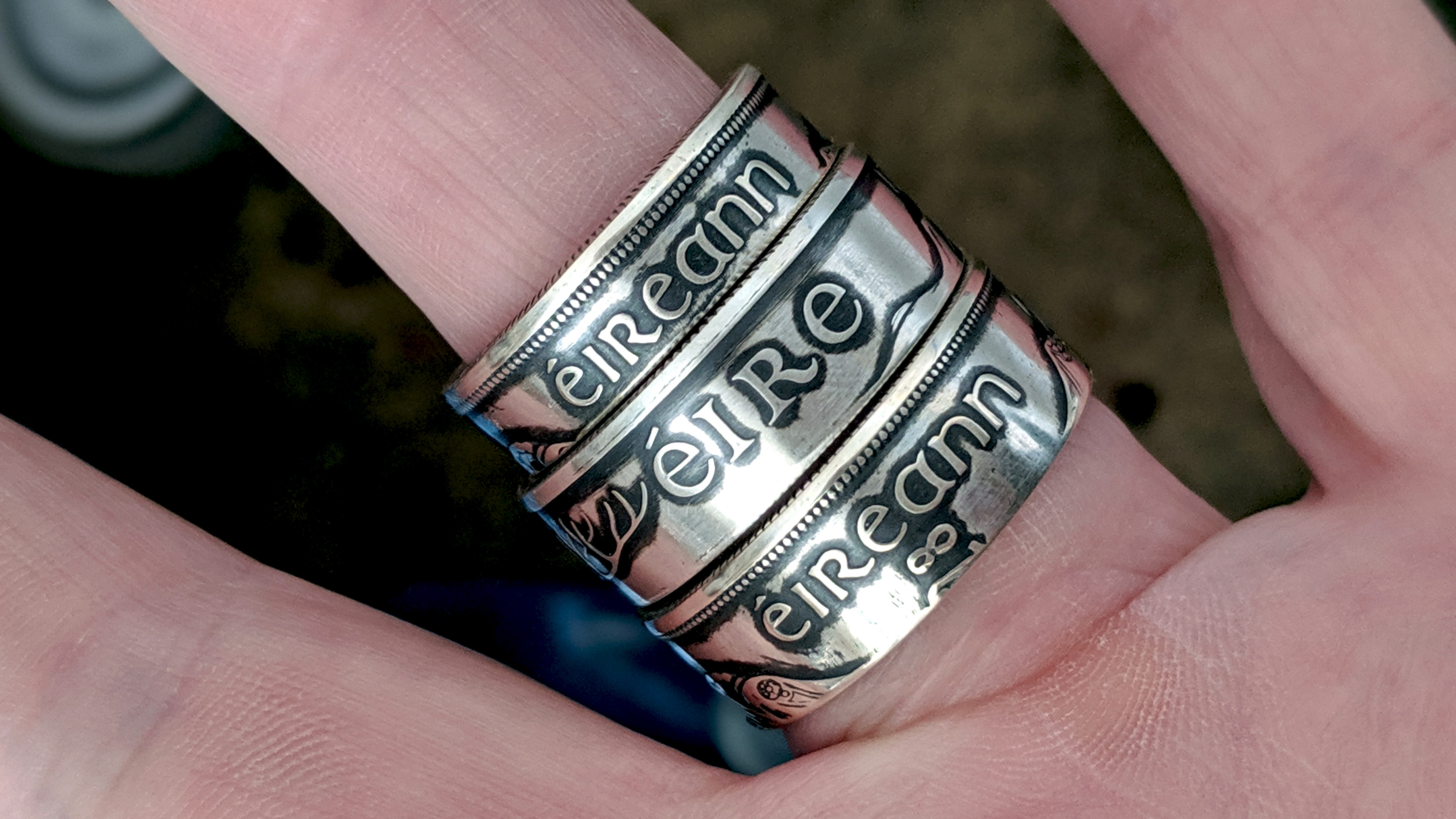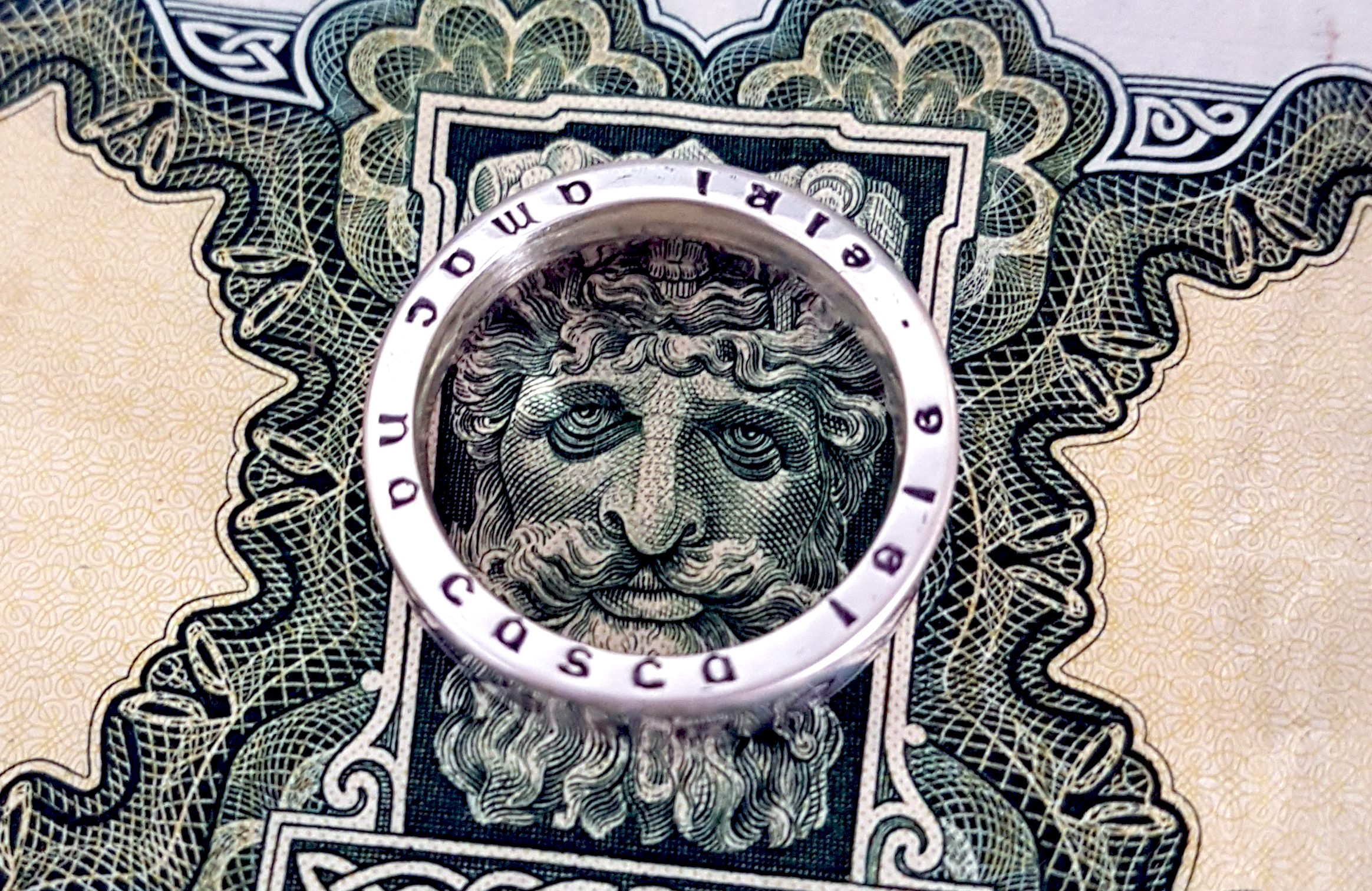Following the establishment of the Irish Free State (Saorstát Eireann) in 1922 it was determined that Ireland needed its own coinage distinct from the British coins in use at the time. To guide this process, the Irish government appointed a committee chaired by renowned poet and senator W.B. Yeats.
The committee decided that each coin would feature a harp on one side (modelled on the Brian Boru harp in Trinity College, Dublin) and animals with particular significance to Ireland on the other. A competition was arranged, and sculptors were asked to submit designs for the new coins. Percy Metcalfe was chosen as the winner and after some modifications the coins went into production

Ireland’s new coins included the bronze farthing (feoirling), halfpenny (leat pingin), and penny (pingin). The threepence (leat reul) and sixpence (reul) were minted in nickel, while the shilling (scilling), florin (floirin), and halfcrown (leat coroin) were struck in 75% silver - this was a higher silver percentage than the British coins of the time that only contained 50% silver.With Ireland’s transition to a republic in 1937, "Saorstát Éireann" on the coins was replaced with “Éire”. The shilling, florin and halfcrown continued to be struck in silver until 1943 when nickel replaced silver. A number of silver florins and halfcrowns were issued in 1943 and then returned to the mint for melting down but some escaped making them valuable to collectors.

Silver was not used in regular Irish coins after this shift, but in 1966, a special silver 10-shilling piece was minted to mark the 50th anniversary of the Easter Rising. This commemorative coin was 83.3% silver and bore Padraig Pearse's bust on one side, with the mythical hero Cú Chulainn on the other. It was also the only Irish coin with an edge inscription until the euro coins: “Éirí Amach na Cásca 1916” ("1916 Easter Rising"). The 10-shilling coin wasn’t popular with the public, leading to more than half of the two million coins being withdrawn and melted down.

In 1971, Ireland adopted the decimal system, requiring a new set of coins. Metcalfe’s designs were retained for most denominations, though the ½, 1, and 2 pence coins featured ornamental birds inspired by manuscripts and designed by Gabriel Hayes. The decimal coinage was struck in bronze and cupronickel. During this period, a few special Irish coins were issued in silver, including the 1990 5 and 10 ECU coins, made of sterling silver and featuring a red deer designed by Tom Ryan. In 2000, a sterling silver Millennium Punt coin was released, and today, these coins are transformed into beautiful rings by Celtic Coin Craft.

In 2002 Ireland’s currency changed again, this time to the Euro. Euro coins have a common side showing a map of Europe, but each country in the eurozone has its own design on the obverse, for which Ireland chose the harp. Since the introduction of the Euro the Irish Central Bank has issued large collector €10 & €15 coins in silver such as the 2004 Celtic Swan and the 2008 Skellig Michael.
From the Saorstát Eireann coins to modern Euro designs, Irish coinage has mirrored the country’s culture, values, and history. Each era - from the iconic Metcalfe animal designs to commemorative silver issues - reflects a unique chapter in Ireland's journey toward independence and national pride. For collectors and enthusiasts, these coins are not only currency but pieces of Irish heritage. Today, coins from various periods find new life in the hands of Celtic Coin Craft, allowing collectors to carry a piece of Ireland’s rich history.
